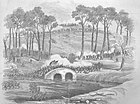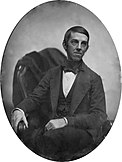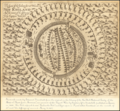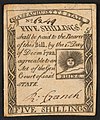The New England Portal New England is a region comprising six states in the Northeastern United States: Connecticut, Maine, Massachusetts, New Hampshire, Rhode Island, and Vermont. It is bordered by the state of New York to the west and by the Canadian provinces of New Brunswick to the northeast and Quebec to the north. The Gulf of Maine and Atlantic Ocean are to the east and southeast, and Long Island Sound is to the southwest. Boston is New England's largest city and the capital of Massachusetts. Greater Boston is the largest metropolitan area, with nearly a third of New England's population; this area includes Worcester, Massachusetts, the second-largest city in New England, Manchester, New Hampshire, the largest city in New Hampshire, and Providence, Rhode Island, the capital of and largest city in Rhode Island. In 1620, the Pilgrims established Plymouth Colony, the second successful settlement in British America after the Jamestown Settlement in Virginia, founded in 1607. Ten years later, Puritans established Massachusetts Bay Colony north of Plymouth Colony. Over the next 126 years, people in the region fought in four French and Indian Wars until the English colonists and their Iroquois allies defeated the French and their Algonquian allies. ( Full article...) Selected article The 21st Massachusetts was part of
Ferrero's Brigade, which captured the infamous Burnside's Bridge during the
Battle of Antietam on September 17, 1862 After garrison duty at the United States Naval Academy in Annapolis, Maryland, the regiment served with the Coast Division commanded by Maj. Gen. Ambrose Burnside. The Coast Division was deployed in January 1862 for operations on the coast of North Carolina, and participated in the Battle of Roanoke Island and the Battle of New Bern among other engagements. Burnside's division was recalled to Virginia in July 1862. The 21st Massachusetts was then attached to the Army of the Potomac and participated in several of the largest battles of the Civil War, including the Second Battle of Bull Run, the Battle of Antietam (capture of Burnside's Bridge pictured), and the Battle of Fredericksburg. The most devastating engagement of the war for the 21st was the Battle of Chantilly, fought on September 1, 1862, during which the unit suffered 35 percent casualties. From March 1863 to January 1864, the 21st served with Burnside in the Department of the Ohio, seeing action in Kentucky and eastern Tennessee. In May 1864, the regiment rejoined the Army of the Potomac, participating in Lt. Gen. Ulysses Grant's Overland Campaign and the Siege of Petersburg. ( Full article...) Selected biography
Oliver Wendell Holmes, Sr. was a
Massachusetts-born physician, poet, professor, lecturer, and author. Regarded by his peers as one of the best writers of the 19th century, he is considered a member of the
Fireside Poets. His most famous prose works are the "Breakfast-Table" series, which began with
The Autocrat of the Breakfast-Table (1858). He is also recognized as an important medical reformer. Surrounded by
Boston's literary elite—which included friends such as
Ralph Waldo Emerson,
Henry Wadsworth Longfellow, and
James Russell Lowell—Holmes made an indelible imprint on the literary world of the 19th century. Many of his works were published in
The Atlantic Monthly, a magazine that he named. For his literary achievements and other accomplishments, he was awarded numerous honorary degrees from universities around the world. Holmes's writing often commemorated his native Boston area, and much of it was meant to be humorous or conversational. (
Full article...)
Selected picture Credit: Arthur J. Stansbury (1848) Sketch of Massachusetts native and former
President
John Quincy Adams after the
stroke that would claim his life
General images -The following are images from various New England-related articles on Wikipedia.
Did you know (auto-generated)
Related portalsMore did you know...
Selected State
Maine
Incorporated 1820 Co-ordinates 45.5°N 69°W Maine is both the northernmost and easternmost portion of New England. It is known for its scenery—its jagged, mostly rocky coastline, its low, rolling mountains, its heavily forested interior and picturesque waterways—as well as for its seafood cuisine, especially lobsters and clams. As Maine entered the 18th century, only a half dozen European settlements survived. Patriot and British forces contended for Maine's territory during the American Revolution and the War of 1812. Maine was part of the Commonwealth of Massachusetts until 1820, when it voted to secede from Massachusetts. On March 15, 1820, it was admitted to the Union as the 23rd state under the Missouri Compromise. Maine is the 39th most extensive and the 41st most populous of the 50 United States. ( Full article...) WikiProjectsAssociated WikimediaThe following Wikimedia Foundation sister projects provide more on this subject:
Discover Wikipedia using
portals |














































































